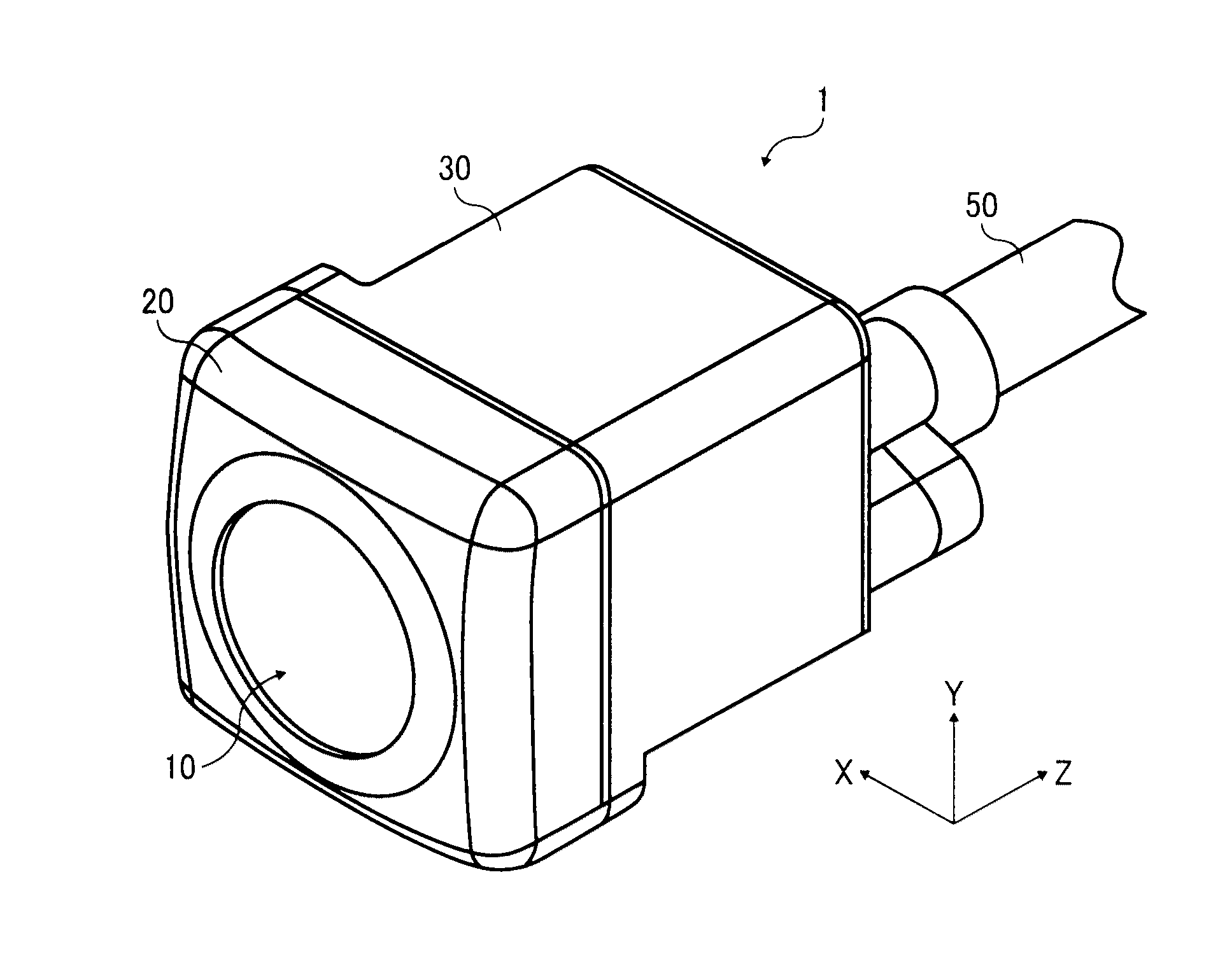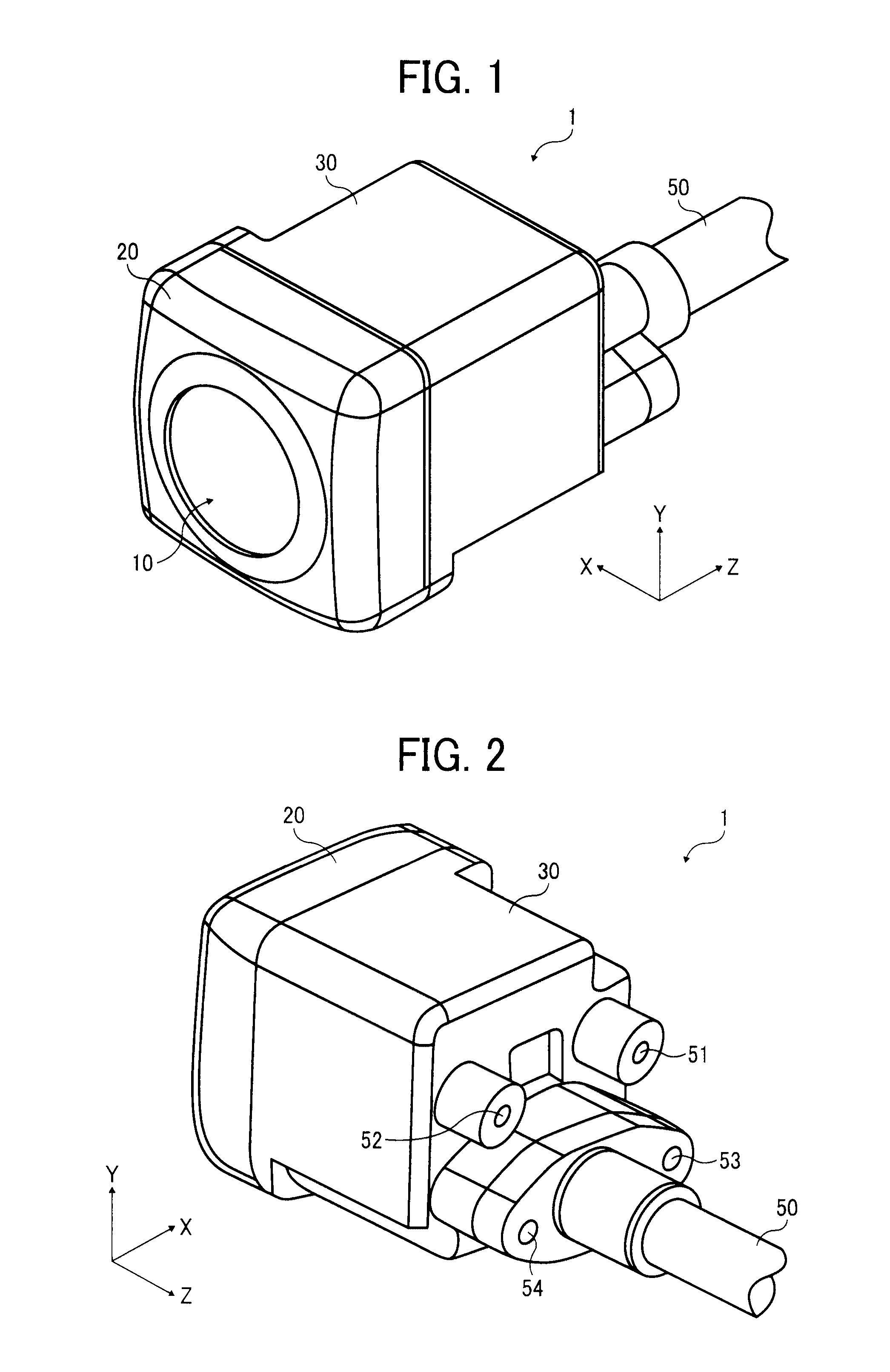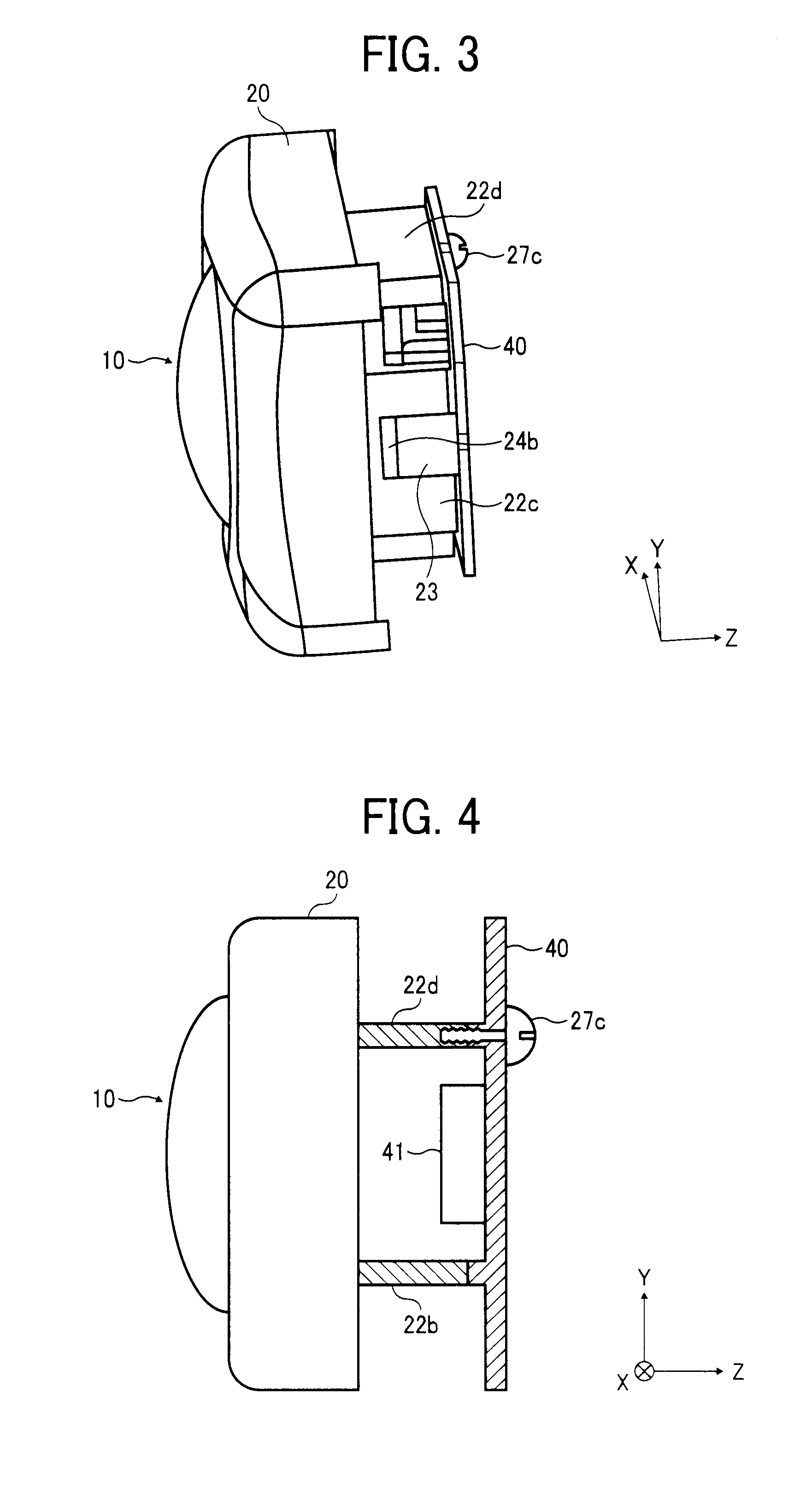Image-capturing device and in-vehicle camera
a technology of image capture device and in-vehicle camera, which is applied in the direction of color television details, closed-circuit television systems, television systems, etc., can solve the problems of inability to obtain a high-quality (clear) image, inability to perform positioning adjustment with high accuracy, and inability to obtain a bonding strength equal or more than that of the screw-fastening. achieve the effect of high accuracy
- Summary
- Abstract
- Description
- Claims
- Application Information
AI Technical Summary
Benefits of technology
Problems solved by technology
Method used
Image
Examples
embodiment 1
[0047]FIG. 1 is a perspective view illustrating an appearance of a front side of an image-capturing device according to an embodiment of the present invention. In addition, FIG. 2 is a perspective view illustrating an appearance of a back side of the image-capturing device. The image-capturing device in Embodiment 1 is an example of an application to a back monitor camera used as an in-vehicle camera. For example, the back monitor camera is set up around a number plate or the like at a rear section of a body of a vehicle (a car). And, a lower area on a rear side of the vehicle body is imaged (a moving image) by the back monitor camera, and is displayed on a display which is set up in a vehicle interior.
[0048]As illustrated in FIG. 1 and FIG. 2, the image-capturing device 1 (the in-vehicle camera; the back monitor camera) according to Embodiment 1 includes: an imaging lens system (an imaging optical system) 10; a lens cell 20 which is formed of a resin material and retains the imagin...
embodiment 2
[0075]Embodiment 2 is a variation on a screw fastening position when the substrate 40 is screwed and fastened to the substrate joint walls of the lens cell 20. For example, as illustrated in FIG. 9A, screw holes 25a and 25b are respectively formed in the substrate joint walls 22a and 22c where the joint intermediate members 23 are joined, and a screw hole 25c is formed in the substrate joint wall 22d.
[0076]That is, the screw hole 25c of the substrate joint wall 22d is located on a straight line B which connects middle points of the substrate joint wall 22b and the substrate joint wall 22d in a direction of the X axis, and the screw hole 25a of the substrate joint wall 22a and the screw hole 25b of the substrate joint wall 22c are arranged at symmetrical positions relative to the straight line B (positions such that a straight line connects the screw holes 25a and 25b becomes the shortest).
[0077]Moreover, as illustrated in FIG. 9B, two screw holes 25a and 25b are formed in the subst...
embodiment 3
[0080]In Embodiment 3, as illustrated in FIG. 10, on each of the tip faces of the substrate joint walls 22b and 22d of the lens cell 20 where the substrate 40 is screw fastened, at least one minute rib 60 is formed along a direction of the optical axis of the imaging lens system 10 (a direction of the Z axis). Other structures are similar to those in Embodiment 1.
[0081]The at least one rib 60 is disposed to be located near each of the screw holes 25a, 25b and 25c of the substrate joint walls 22b and 22d. For each of the substrate joint walls 22b and 22d, it is preferable that at least two ribs 60 be arranged at symmetrical positions with respect to the optical axis. The entire substrate 40 can be kept at a same height with the ribs 60. The height of each of the ribs 60 is set in such a range that the substrate can be kept at a position where a subject image is imaged by the imaging lens system 10, on the light receiving surface of the image sensor 41 within a range of a tolerance fo...
PUM
 Login to View More
Login to View More Abstract
Description
Claims
Application Information
 Login to View More
Login to View More - R&D
- Intellectual Property
- Life Sciences
- Materials
- Tech Scout
- Unparalleled Data Quality
- Higher Quality Content
- 60% Fewer Hallucinations
Browse by: Latest US Patents, China's latest patents, Technical Efficacy Thesaurus, Application Domain, Technology Topic, Popular Technical Reports.
© 2025 PatSnap. All rights reserved.Legal|Privacy policy|Modern Slavery Act Transparency Statement|Sitemap|About US| Contact US: help@patsnap.com



